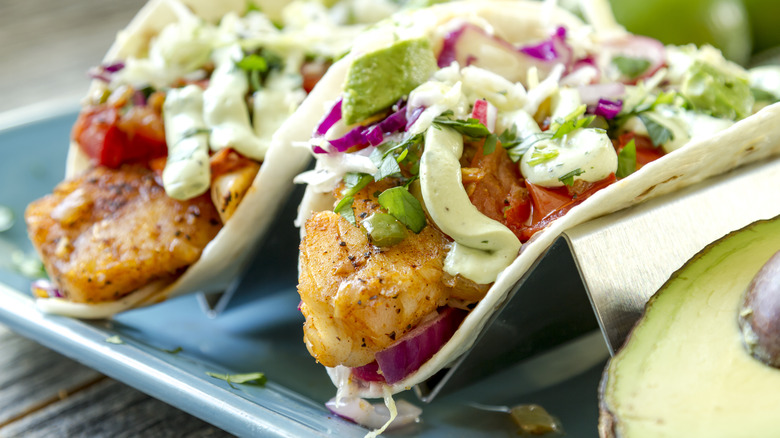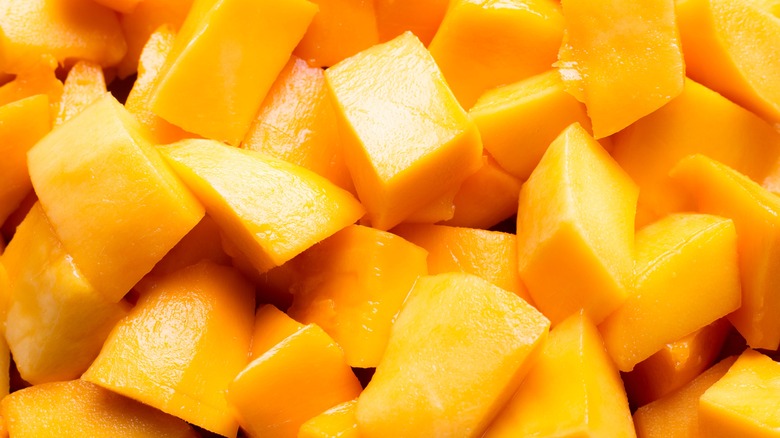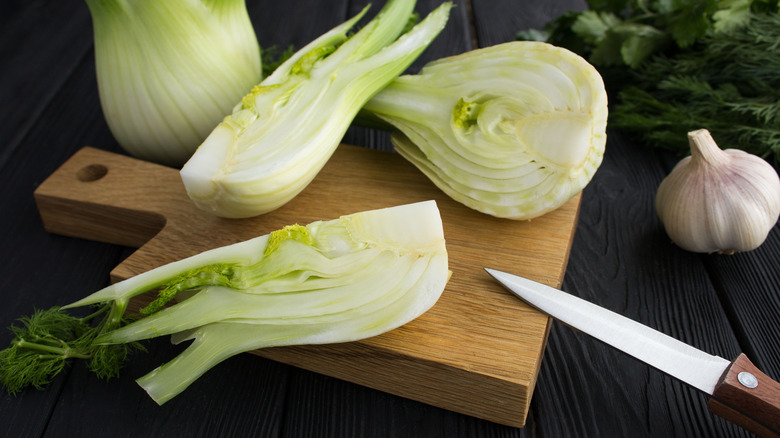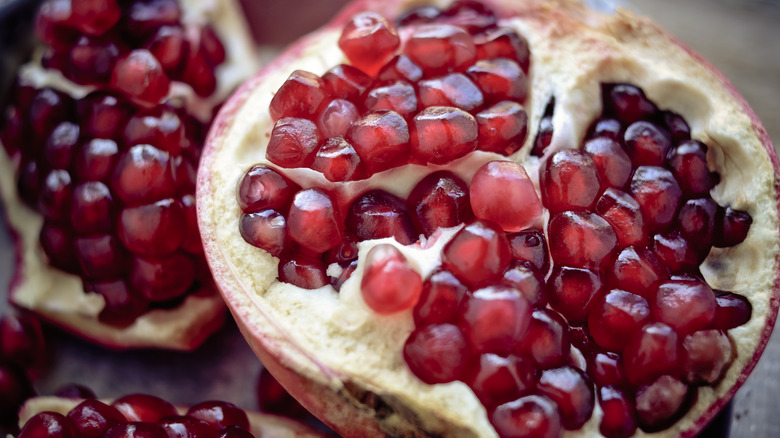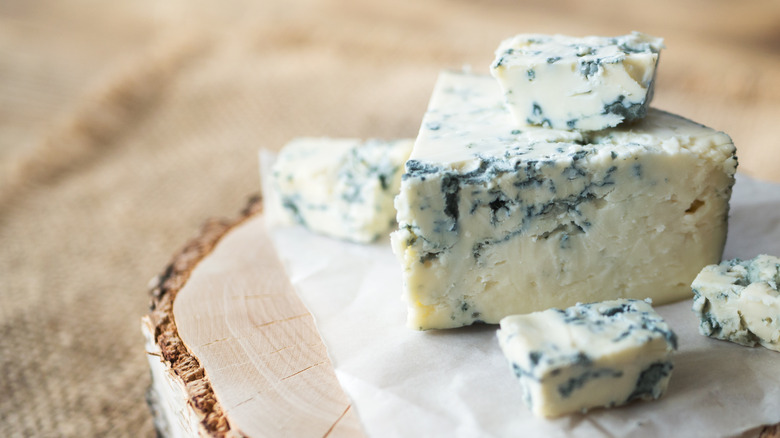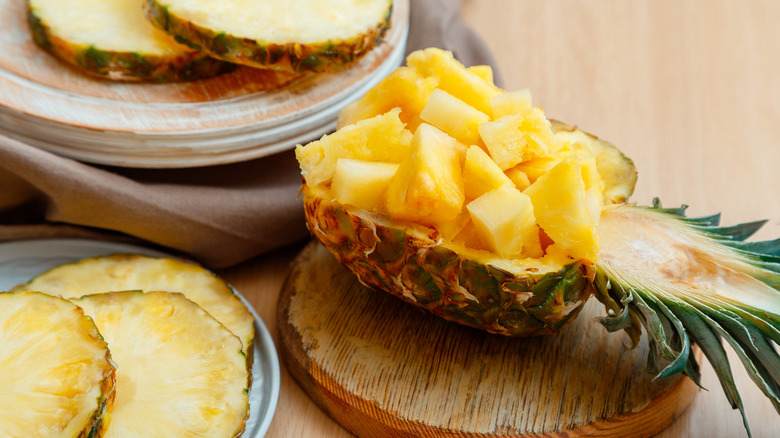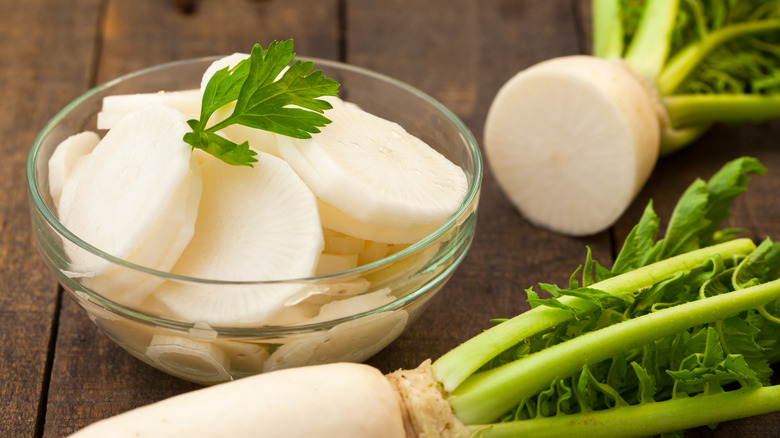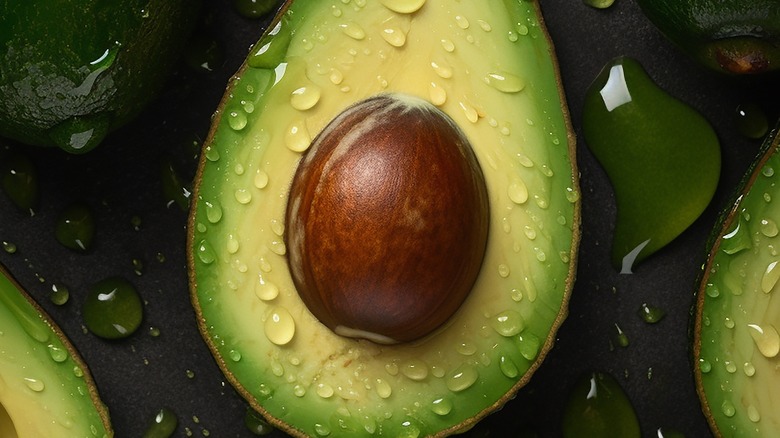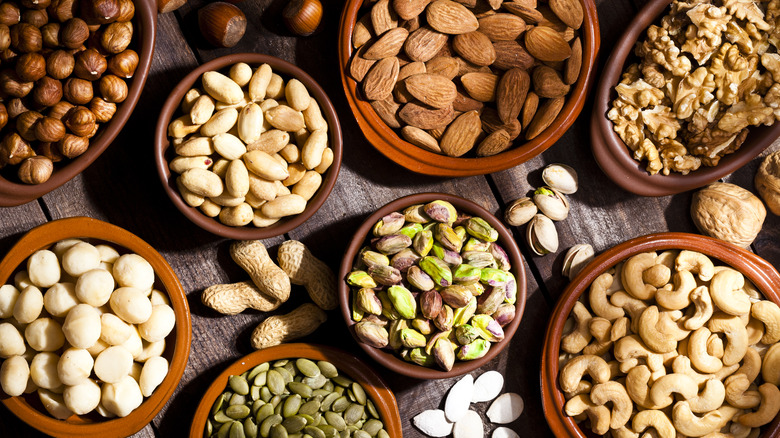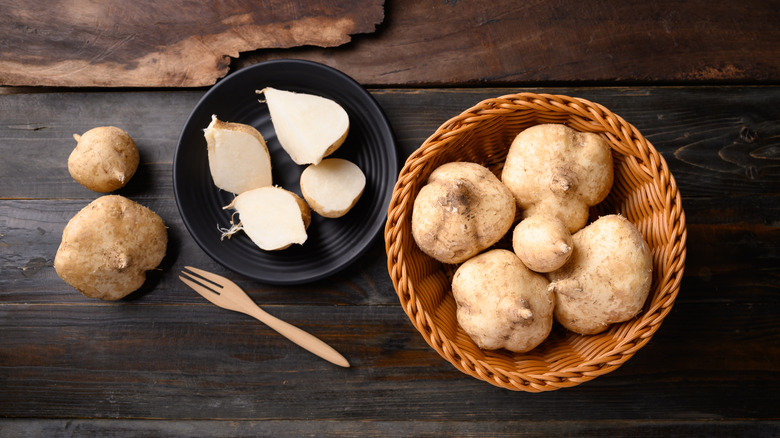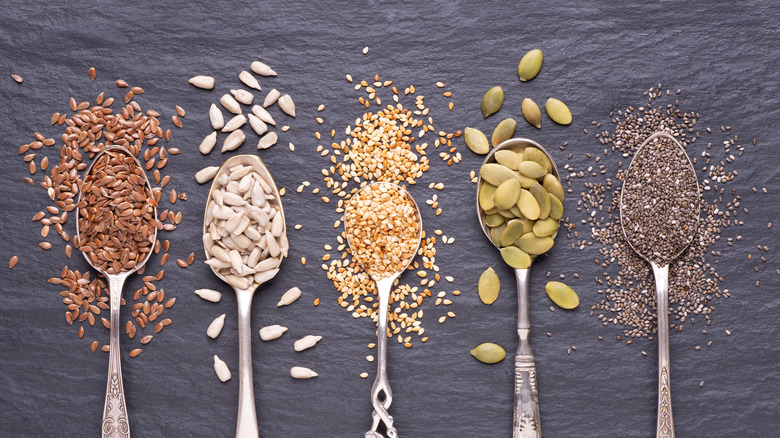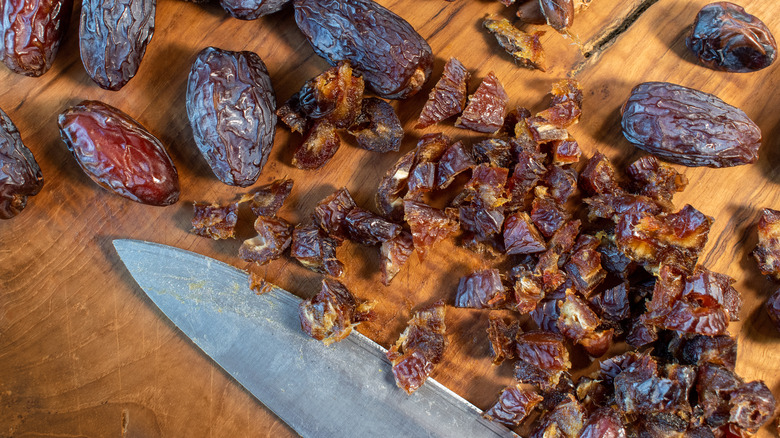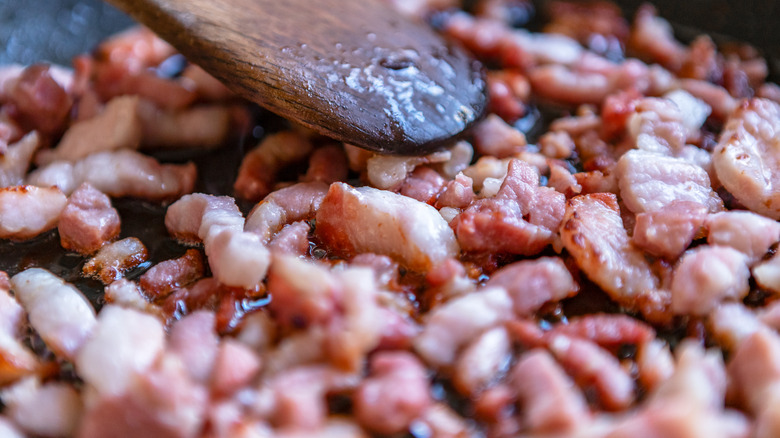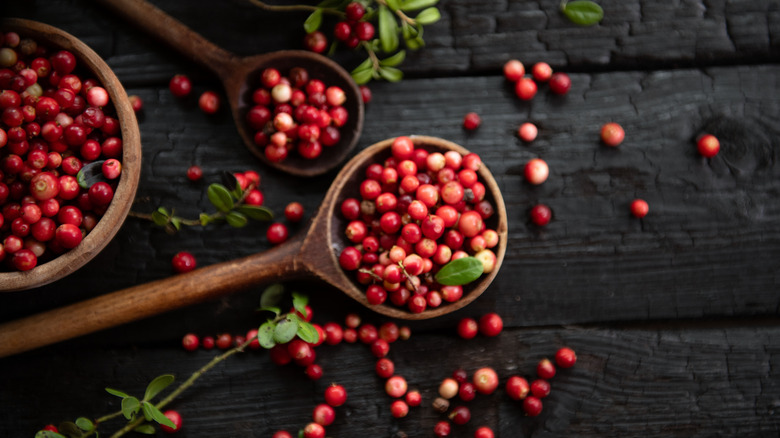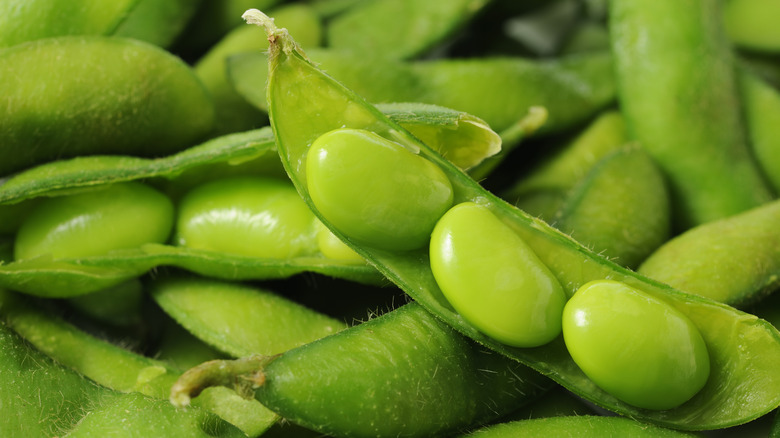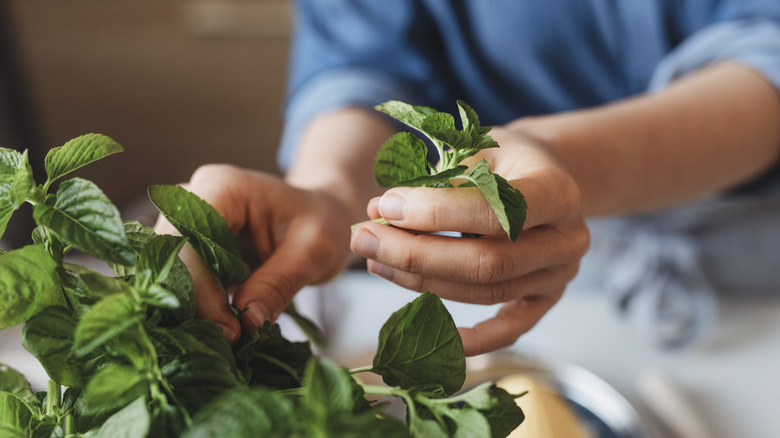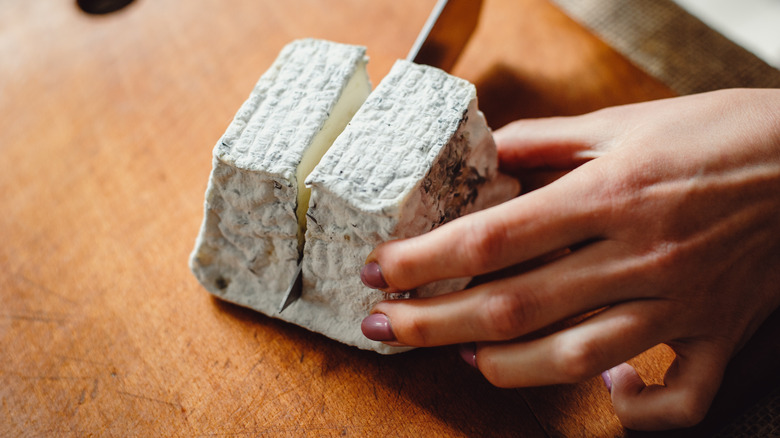16 Unique Ingredients That Will Make Your Coleslaw So Much Better
While it's believed coleslaw has been eaten as far back as Roman times, its modern form originated in the Netherlands as "koolsla" — meaning "cabbage salad." It's a side dish that's found its way into most cuisines around the world, in some form or another. A typical coleslaw recipe consists of thinly sliced raw cabbage, vegetables like carrots and onion, and a creamy component such as mayonnaise.
However, try branching out from the classic variations, as coleslaw is one of the easiest dishes to improve with simple additions or substitutions — if you avoid a handful of common mistakes. Making your own slaw from scratch can be quick and simple, and it's just as straightforward to adjust the ingredients to match up with any number of dishes based on their flavors and textures. Whether you take inspiration from one of many global variants or fancy getting creative and coming up with your own recipe, the ingredients below are guaranteed to make your coleslaw way better.
Mango
While most of us probably think of coleslaw as a savory side dish, there are times when introducing an ingredient as sweet and succulent as mango can completely transform a meal. Almost any type of mango will do, as long as it's ripe enough to have a soft, juicy texture.
Aside from the mango's texture contrasting perfectly with the crunchy cabbage component, the sweetness is perfect for cutting through the heat of spicy foods. Typically, you might try pairing mango coleslaw with Caribbean-style dishes like jerk chicken, but you'll find it works just as well with other piquant cuisines, such as Indian or Mexican food. Mango is also super refreshing, meaning it's perfect for balancing richer meats like barbecued pulled pork. You can easily add mango to a classic coleslaw recipe, perhaps with a splash of lime juice or a vinaigrette to balance the acidity — but its creamy texture also makes it perfect for vegan slaws as a replacement for mayonnaise.
Fennel
Although fennel's unique taste isn't for everyone, its mild anise flavoring and hint of sweetness open up plenty of interesting pairing combinations when used in coleslaw. Raw, fennel's texture is slightly crunchier than cabbage's, so you can adjust the flavor intensity by adding just a little to your recipe, or using it as a complete cabbage replacement.
The fresh, fragrant aroma of fennel provides a great contrast for grilled meats like chicken, pork, or fish, and can also enhance vegetarian dishes by adding more flavor to less intense ingredients. To increase the sweetness of the fennel, you can dice it up and sauté it like you would onions, but bear in mind the vegetable will also become softer in texture. Additionally, although there's more natural sugar in fennel than in cabbage, overall, it's more nutritious with extra vitamins and minerals, and a higher amount of dietary fiber per gram.
Pomegranate seeds
When it comes to ingredients that bring a lot to the table, pomegranate seeds are hard to beat if you pick the perfect fruit. For starters, they do wonders for the texture of salad-like dishes by adding a wonderful crunch that contrasts with the soft and creamy elements.
Flavorwise, the seeds of the pomegranate fruit are super interesting because they'll introduce both sweet and tart dimensions to your coleslaw, so in some respects, they're self-balancing in terms of taste. Sweet and fruity flavors are excellent for pairing with grilled meats and balancing out spice, but they'll also play off the earthy elements of roasted vegetables. You'll commonly find pomegranate seeds in Mediterranean and Middle Eastern recipes, and it's easy to make a fresh coleslaw that pairs with meals from these aromatic cuisines. It's also worth considering the old adage that "we take the first bite of a meal with our eyes," as pomegranate seeds' vibrant color can dramatically boost the visual appeal of your coleslaw.
Blue cheese
The potent tang of blue cheese isn't everybody's cup of tea, but if you're someone who can't get enough of the stuff, you're going to want to test it out in your next batch of coleslaw. The easiest way to add blue cheese to your coleslaw is by picking a crumbly variety like Stilton or Roquefort, breaking it up into smaller pieces, and sprinkling it throughout your mixture.
However, if you really want to incorporate all of the rich and funky flavors throughout your coleslaw, the best approach is to choose a creamier style of blue cheese like Gorgonzola that you can blend into your mayonnaise to thoroughly coat all of your ingredients. Sweeter additions like sliced apple, pear, or even sultanas contrast superbly with the cheese's sharpness — and this style of coleslaw works best with classic blue cheese food pairings, such as buffalo hot wings, grilled pork, or barbecue beef.
Pineapple
Like mango, adding pineapple to your coleslaw brings an entirely new sweet dimension to the dish. However, pineapple also contributes extra crunchiness, as well as a slightly tart, acidic aspect that helps it cut through richer foods.
Pineapple's refreshing juiciness is ideal for tempering spice and contrasting with smoky and umami flavors, so it's perfect for barbecued meats, jerk dishes, and teriyaki-style sauces and marinades. It's great for adding depth to leaner meats like turkey, and makes for a deliciously tangy and tropical taco filler, pairing with light fish just as easily as it does with rich pork. When using sweet and fruity ingredients like pineapple in coleslaw, it's important to keep balance in mind as it can be easy to overdo it. Ingredients like onion are sharp enough to counter pineapple's saccharine qualities, jalapeño peppers will complement the sweetness and add a mild heat — you'll want to make sure you go for an unsweetened mayonnaise base.
Daikon
Native to Asia, daikon is a type of radish that's not quite as intensely flavored as some of the other varieties, making it ideal for adding a mildly spicy and peppery crispness to coleslaw. Sliced or grated raw, daikon will also bring a touch of sweetness to your recipe.
It probably goes without saying that daikon coleslaw is a well-matched partner for Asian-inspired dishes like stir-fries, sushi, rice bowls, and dumplings, and you can tweak it further by using a sesame and ginger dressing. The sweet and spicy elements of daikon can bring out the flavors of vegetable-based dishes and savory meats; however, despite its milder taste compared to other radishes, it's still best to combine it with cabbage to make up the bulk of your coleslaw. Daikon is also an excellent choice if you're counting calories, as the USDA calculates the vegetable only having 18 calories per 100 grams, while still being packed with plenty of beneficial nutrients.
Avocado
If you're familiar with fresh guacamole, then you'll already know how creamy, ripe avocado can bring a rich and velvety texture to dishes, one that also works fantastically in coleslaw. Pairing avocado with crunchy cabbage is a match made in heaven, and its subtle flavor can elevate the overall flavor profile of your coleslaw while still letting the more potent ingredients shine through.
Avocados are packed with healthy nutrients and contain antioxidants so they're a great way to boost the nutritional value of any meal, especially in a vegetable-based side like coleslaw (via Healthline). Its versatility also means you're not particularly limited in terms of the foods you pair your slaw with. Like guac, avocado coleslaw works extremely well with Mexican cuisine, particularly as a taco filling alongside grilled meats and vegetables, or as a side for quesadillas. Its richness makes it an excellent choice for enhancing more lean ingredients but it's also refreshing enough to go with meatier fish, like salmon or tuna.
Nuts
Aside from introducing more texture to your coleslaw, nuts can be a quick and easy way to make your coleslaw even healthier. However, you shouldn't overlook the range of flavors you can experiment with by sprinkling in a handful of raw or toasted nuts.
A classic coleslaw booster is fresh walnuts which you can chop to your preferred size, as their slight bitterness contrasts fantastically with sweeter ingredients, especially thin slices of apple or juicy sultanas. Simultaneously, sweet and buttery pecans or cashews can bring a richness that complements fresh vegetables, while slivered almonds — toasted or raw — will introduce a more classic nutty flavor to your coleslaw. In terms of matching your coleslaw with main dishes, the slightly earthy profile of walnuts, pecans, and macadamias are excellent for slightly sweet, glazed meats, while creamier nuts like cashews, peanuts, and pine nuts are delicious with spicy curries and stir-fries. With the right recipe, there aren't many nuts that can't be used to improve your coleslaw as long as you consider how they'll interplay with the rest of your ingredients.
Jicama
Jicama, commonly referred to as Mexican turnip, is a uniquely delicious root vegetable native to Central America that's also found its way into Asian cuisine. It's an interesting ingredient that, at first glance, looks similar to a beet on the outside and not unlike a raw potato when cut open.
However, looks can be deceiving, and jicama has a refreshingly crisp texture and tastes like a less sweet version of an apple. While you will need to peel the skin off jicama first, they can be eaten completely raw to maintain their fresh qualities and therefore make a superb addition to coleslaws. Its unique mouthfeel offers a delightful contrast to coleslaw's red cabbage, and the mild sweetness pairs wonderfully with a pinch of chili powder. Although jicama slaw naturally pairs with most Mexican and Central American dishes, it's excellent with citrus-forward recipes and those with a tangy, acidic profile.
Seeds
Like nuts, adding seeds to your coleslaw will bring a new textural dimension to your recipe. As long as you make sure your seeds of choice are edible, you've also got plenty of options to choose from depending on whether you're looking to add some extra crunch, boost nutrition values, or add depth by introducing extra flavors.
Sesame seeds might only make a subtle difference to the texture of your coleslaw, but their delicate nuttiness is perfect for Asian-inspired slaws and food pairings, especially in conjunction with ingredients like spicy ginger and sweet honey. Sunflower seeds and pumpkin seeds will contribute more to the overall mouthfeel and provide a wholesome earthy taste that complements vegetable-based dishes and softer mains like risotto, shepherd's pie, or macaroni and cheese. If you want to add more aromatic flavors to your coleslaw, then celery, caraway, or coriander seeds are prime contenders. However, with some aromatic seeds, instead of throwing them straight in, you might want to lightly toast them before grinding them up into a powder to unleash their full seasoning potential and more evenly distribute their intense flavors throughout your coleslaw.
Dates
While dates will contribute a fair amount of sweetness to your coleslaw, it's hard to compare them directly to ingredients like mango or pineapple. For starters, they'll introduce a unique chewy component that balances the overall texture, one that works best if you dice your dates up and mix them thoroughly with the rest of your ingredients.
Rich rather than refreshing, coleslaw with dates in it pairs best with lighter dishes, adding depth while the sweet flavor evens out salty and acidic foods. The first places to look for inspiration are cuisines that frequently incorporate dates into their dishes, such as Middle Eastern and North African recipes. For example, date coleslaw is excellent with fragrant curried chicken and chickpea dishes, and it's the perfect accompaniment to delicate, citrusy salads, particularly couscous or quinoa salads. It also goes well with crumbed, flakey fish, like cod or haddock, creating a smorgasbord of interwoven textures.
Lardons
If you're a fan of bacon, you won't want to overlook lardons as a potential ingredient for your next batch of coleslaw. Although they're essentially pre-cut strips or cubes of slab bacon, they're arguably a much better choice than simply cooking and dicing bacon yourself.
Aside from saving on prep time, lardons are made from fattier cuts of salted and cured pork, so it's easier to get them nice and crispy on the outside while keeping some of their juicy meatiness just below the surface. Like bacon, lardons will add a massive flavor boost to your coleslaw, building on the savory elements, increasing the saltiness, and bringing in a touch of smoke. They're unbeatable when it comes to balancing sweeter ingredients too, like apple slices or dates. In terms of food pairings, it works best with similarly savory dishes like grilled chicken, barbecued pulled pork, maple-glazed ham, or even as a side to a decadent cheeseburger.
Cranberries
Similarly to pomegranate seeds, cranberries are a great choice for adding semi-sweet and slightly tart flavors to your coleslaw — along with a vibrant hue — but they're not exactly the same. The most obvious difference between the two is their texture.
While pomegranate seeds provide extra crunch to coleslaw, cranberries can offer a burst of juiciness when used fresh, or you can choose the dried variety for a chewy, raisin-like texture. It's no secret that cranberries are a great addition to festive dishes. Many of the same kinds of food pairings work here — lean meats like grilled turkey, chicken, or salmon are prime contenders for coleslaw with cranberries in it, and their fruitiness is the ideal partner for creamy cheeses like brie, Camembert, or feta. They also have a slightly tannic quality which, like wine, can pair effectively with fattier meats such as steak or pork chops. Additionally, cranberries are a superb source of vitamins and are well-known for their nutritional benefits, such as maintaining urinary tract health (per Healthline).
Edamame
Edamame is the name given to young soybeans, a delicacy in Japanese cuisine. While edamame usually comes in pods and can be eaten raw, it's best to cook them beforehand, which you can do by boiling them in salted water for the best texture and flavor.
The cooked edamame beans will still add a tasty crunch to your coleslaw that complements the other ingredients — like cabbage and carrots — while making the dish pop visually with its vibrant green coloring. Edamame has a mild nutty flavor that's fantastic in an Asian-inspired slaw, using ingredients like peanuts, ginger, and sesame oil, bolstered with a rich umami soy or miso dressing. It's also an excellent source of whole plant protein, with 11.54 grams of protein per 100 grams, according to the USDA. This makes it ideal for those following a vegetarian or vegan diet, and it's a tasty side for veggie sushi, spicy Japanese fusion tacos, and tofu-based dishes.
Mint
There are few better ingredients for making a dish more refreshing than the invigorating essence of mint. Fresh leaves are by far the best, and it's an ingredient that pairs with the majority of cuisines.
Mint can work as a highly effective palate cleanser, so it's excellent for when you're making a coleslaw as part of a multi-dish meal — buffet or tapas-style. At the same time, its herbaceousness lifts the character of aromatic foods and marries well with citrus, and its cooling effect can temper spice, so it's excellent with Mediterranean food. Although mint can be overpowered by richer ingredients and often goes best with well-seasoned, lighter meats like chicken, it can give your coleslaw a tzatziki-like quality, so it pairs fantastically with fragrant lamb or grilled halloumi. Lightly pressing your mint leaves when adding them to your slaw will help release the natural oils that contain most of the flavor and aroma compounds; however, it's important not to overdo it, as crushing them too hard can result in an unwelcome astringent flavor.
Goat cheese
If you find blue cheese a little too intense for your palate, goat cheese is a stellar coleslaw ingredient. While it's still delectably tangy, it's generally creamier than blue cheese, so will give you a smoother mouthfeel overall when torn up and sprinkled among the rest of your coleslaw mix.
Being milder than blue cheese, goat cheese is a bit more versatile, so it's a better option for lighter dishes that don't require extremely bold flavors, like grilled chicken wraps. At the same time, it shares aspects that make it spark against fruity, nutty ingredients such as pears and walnuts, especially when you add those directly to your coleslaw. Additionally, goat cheese's extra creamy texture means it's a top choice for contrasting with sharp and salty ingredients — for example, bacon or caramelized onion. And to really make your coleslaw zing, you can try stirring a drizzle of high-quality, aged balsamic glaze into your recipe.

